Adding colored flowers to your garden is a great way of brightening up your flower bed and bringing a smile to your face when you spend time in your backyard. If you’re wondering what hot pink flowers you can use to brighten up your backyard, look no further!
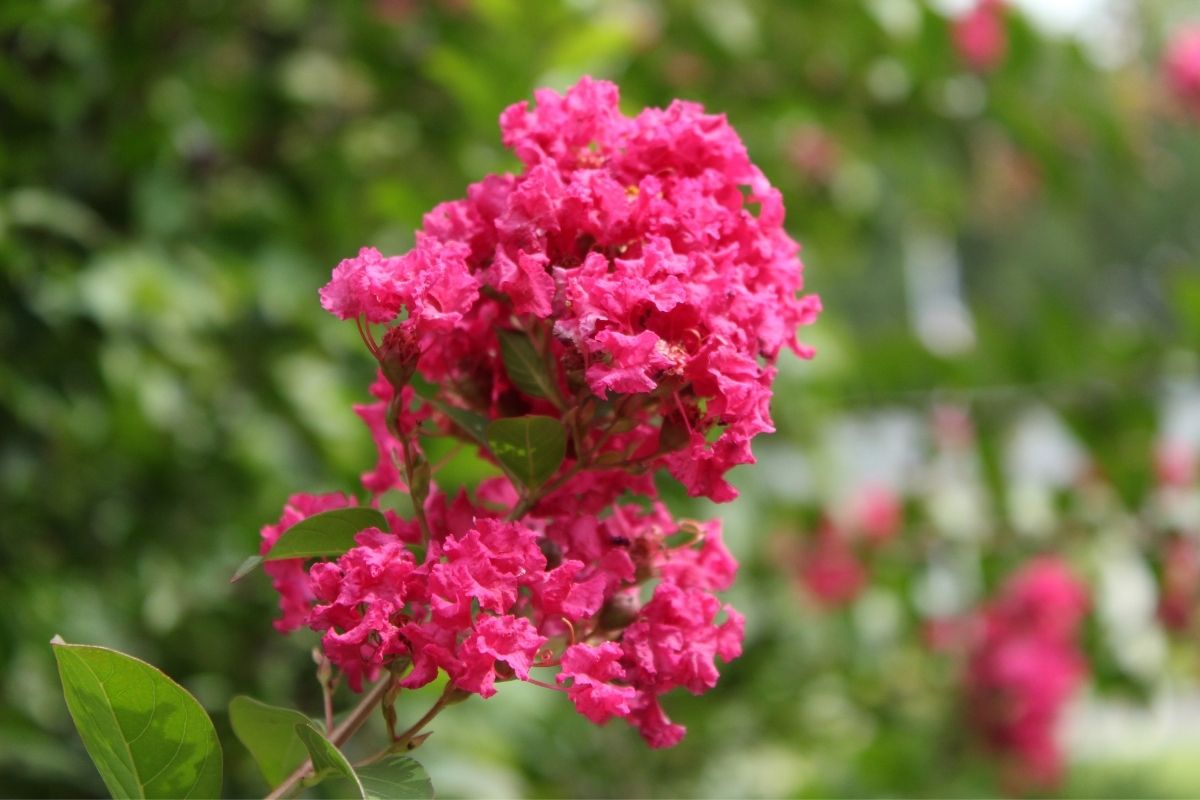
In this article, I will cover various hot pink flowers.
So, next time your flower beds are in need of some TLC, you have plenty of inspiration on how you can brighten the place up.
Keep reading to find out more.
1. Beardtongue
Beardtongues are easy-to-grow perennials that are native to North America.
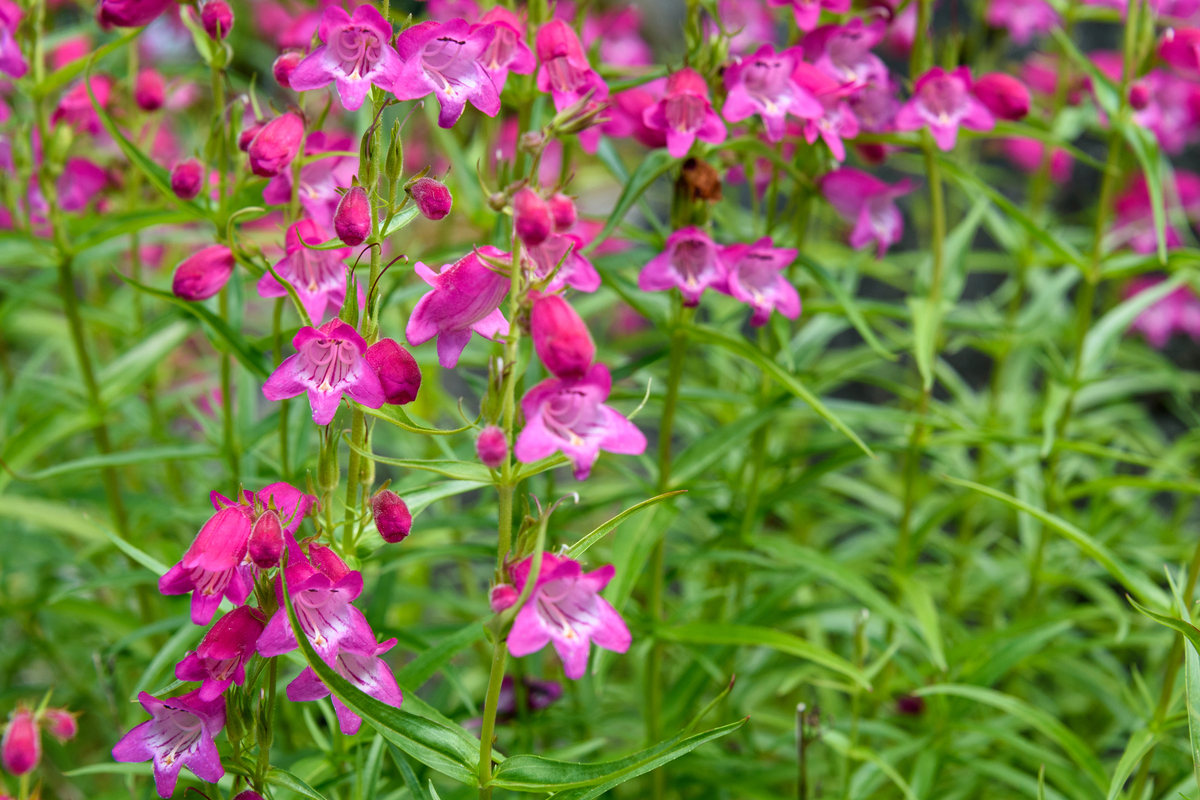
Beardtongues produce a variety of flower colors, including pink, red, white, purple, and less commonly, yellow. The bloom time for these flowers is during spring and early summer.
To extend your beard tongue’s lifespan, you will need to make sure that you are regularly pruning your beardtongues.
2. Azalea
Azalea flowers are beautiful funnel-shaped flower. They are often fragrant and contain a long spur that is full of sweet nectar.
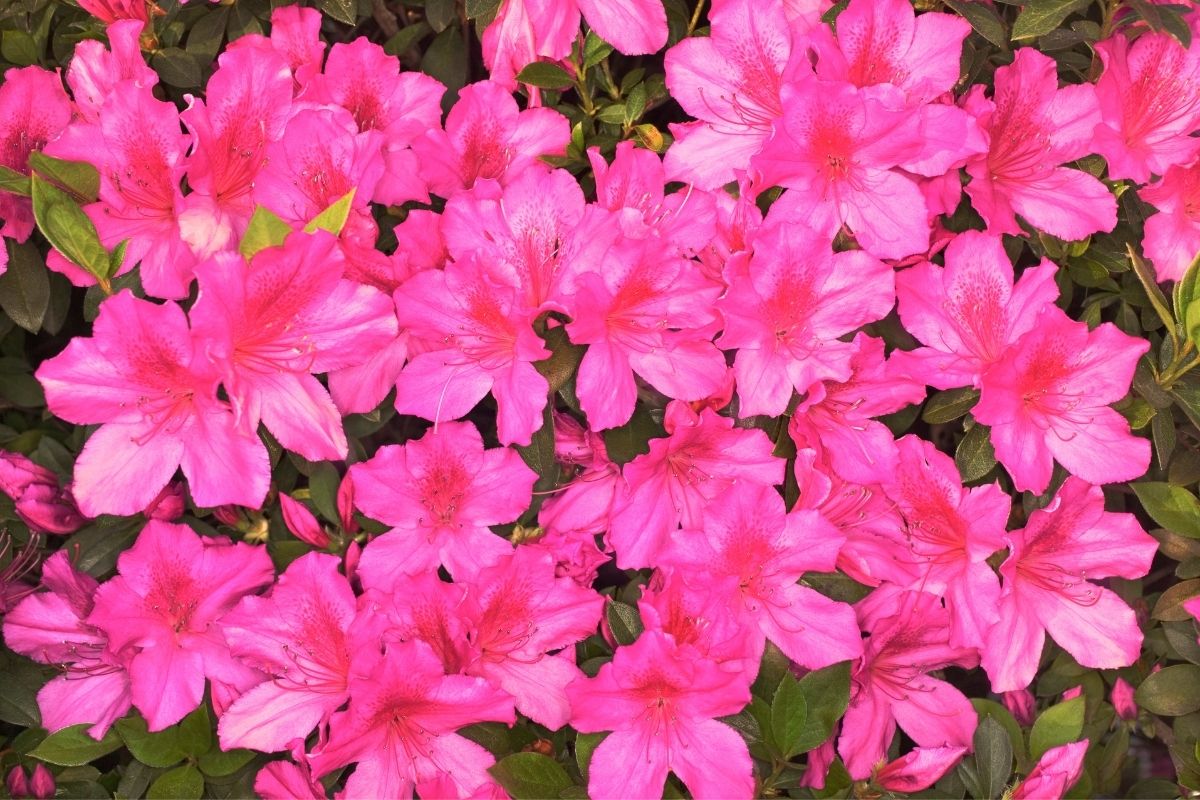
Azaleas do well in full sun or part shade, as they need around four hours of sun in order to thrive.
They produce beautiful blooms of all colors, including orange, red, purple, and hot pink.
The leaves taste somewhat peppery and are sometimes used as a garnish in dishes such as salads.
3. Aster
Asters are perennial flowering plants that are similar to daisies.
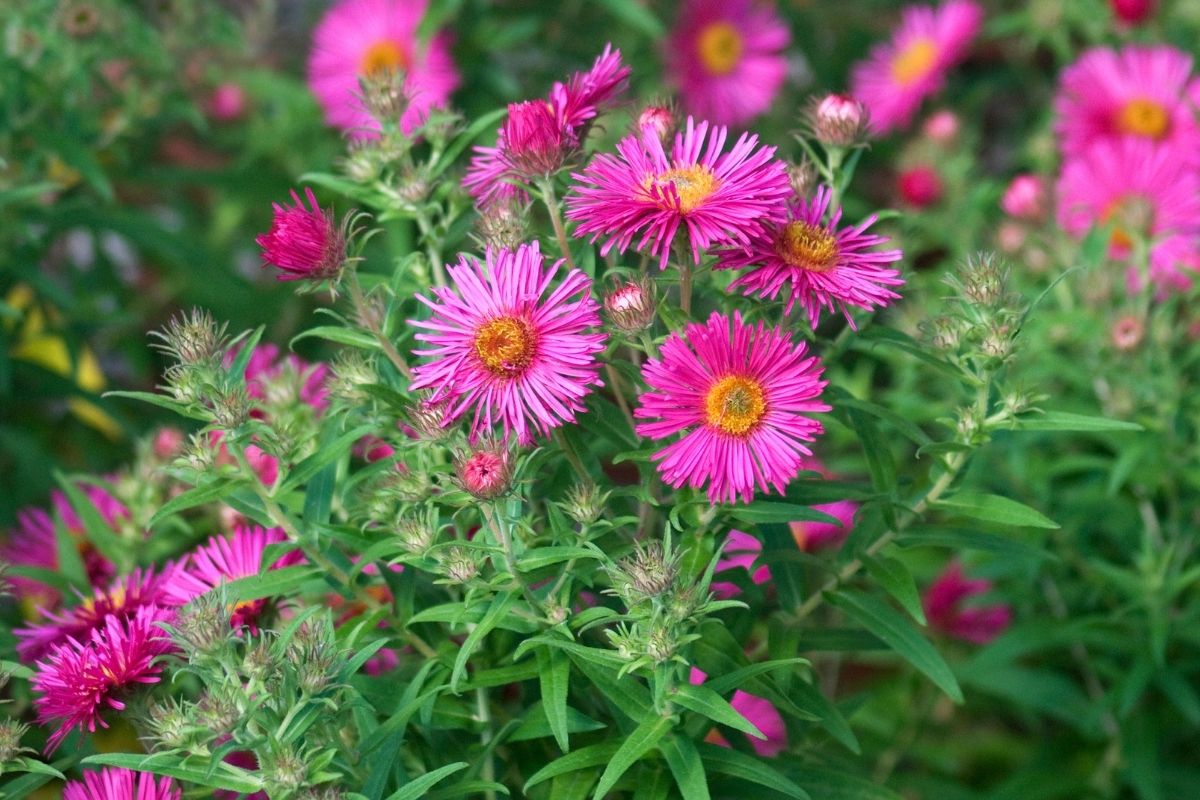
These flowers have starry-shaped flower heads that range in color – from pink to bluish-purple and can be double, semi-double, or single.
Asters have a late bloom time, with their flowers not typically appearing until September, which is why they are known as Michaelmas daisies, which refers to the holiday that occurs annually in September.
To thrive, asters require a location with full to partial sun.
Asters are moisture-sensitive, meaning if they are given too much or too little water, they will often lose their lower foliage or fail to bloom properly.
4. Dahlia
Dahlias are perennials that are the national flower of Mexico.
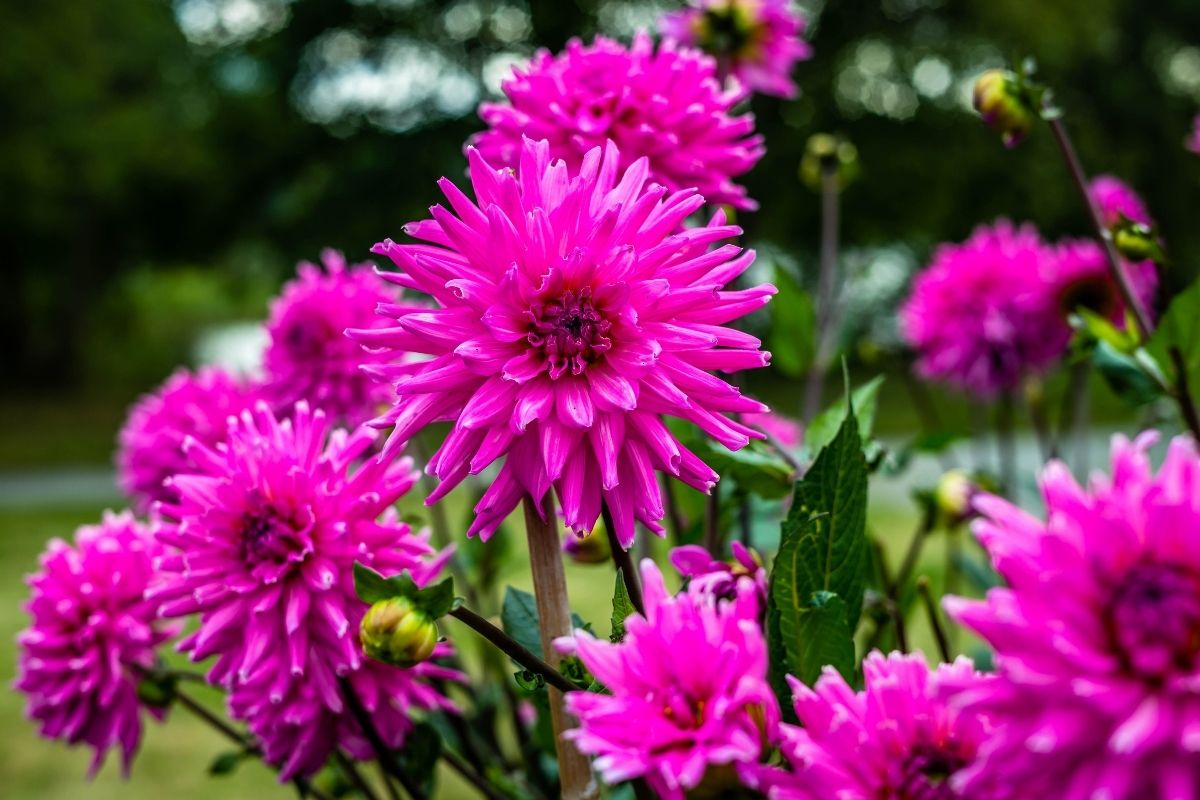
When growing dahlias, they thrive the most in full sun and tend to grow more blooms with 6 to 8 hours of direct sunlight.
Dahlias brighten up any sunny garden and typically bloom through summer and into late autumn until the first frost.
They produce blooms in a range of colors, including hot pink, pink, peach, red, yellow, white to name a few.
5. Hyacinth
Hyacinths are spring-blooming perennials.
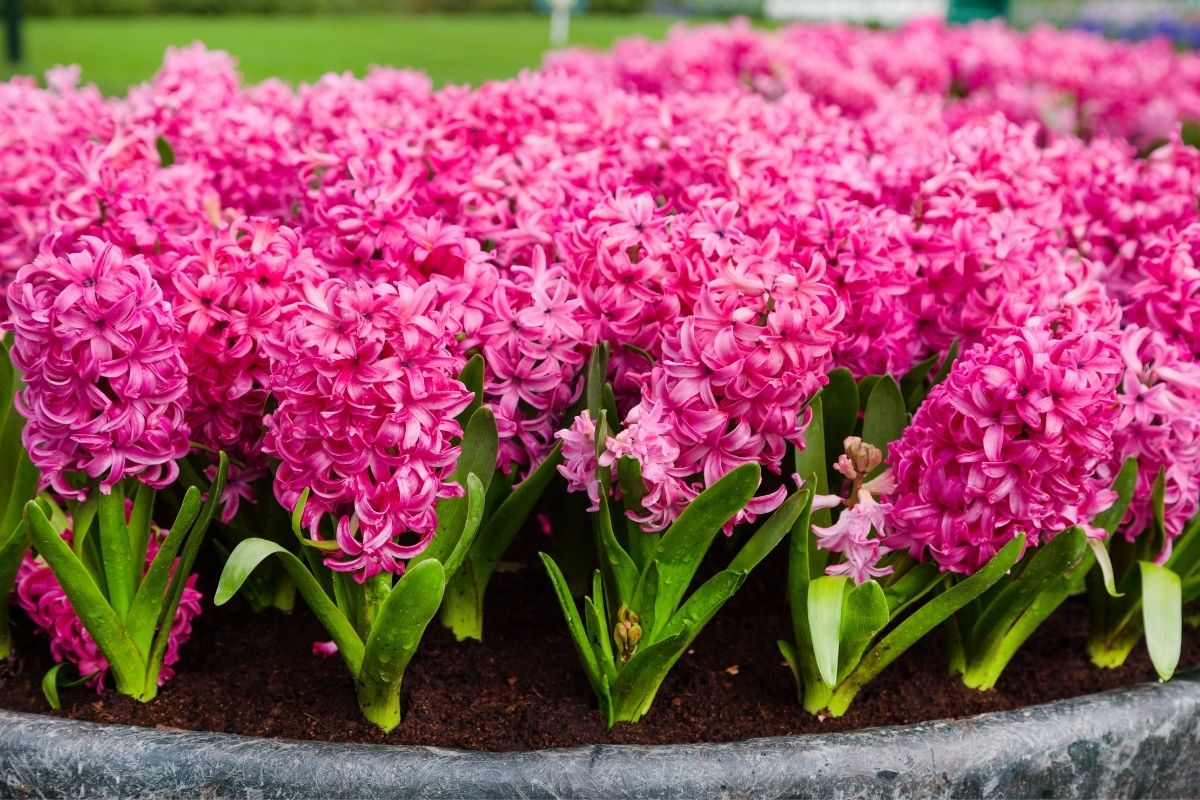
The flowers of Hyacinths grow in clusters, creating carpets of vibrant spring colors in your backyard.
There are several colors of hyacinths, including white, cream, pink, rose, peach, lavender, deep blue, deep purple, and dark red.
Hyacinths will typically bloom in March and April if they have been planted at the start of the autumn season.
Hyacinth flowers offer sweet fragrances, making them the perfect addition to any flower bed.
RELATED: Harmonious And Sweet: 11 Different Types Of Hyacinths
6. Ranunculus
Ranunculus, also known as buttercups, are cool-season flowering plants in the family Ranunculaceae.
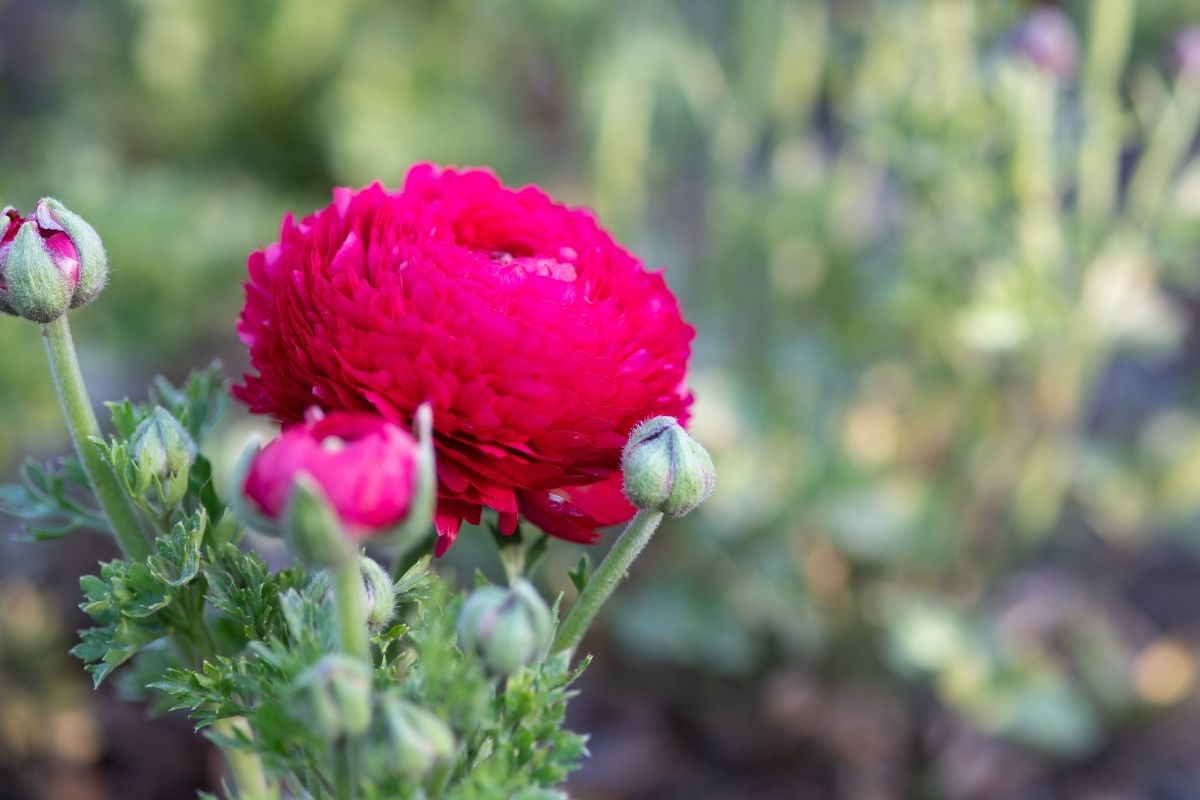
These rose-clustered flowers should be planted in the fall for them to bloom from spring to early summer and will flower continuously for 6 to 7 weeks.
These flowers can be both annual or perennial and will grow back unless the conditions that they are growing in aren’t favorable.
7. Limonium
Limonium, also known as sea lavender, is a flowering plant with lobed leaves that grows in a circular pattern on the ground.
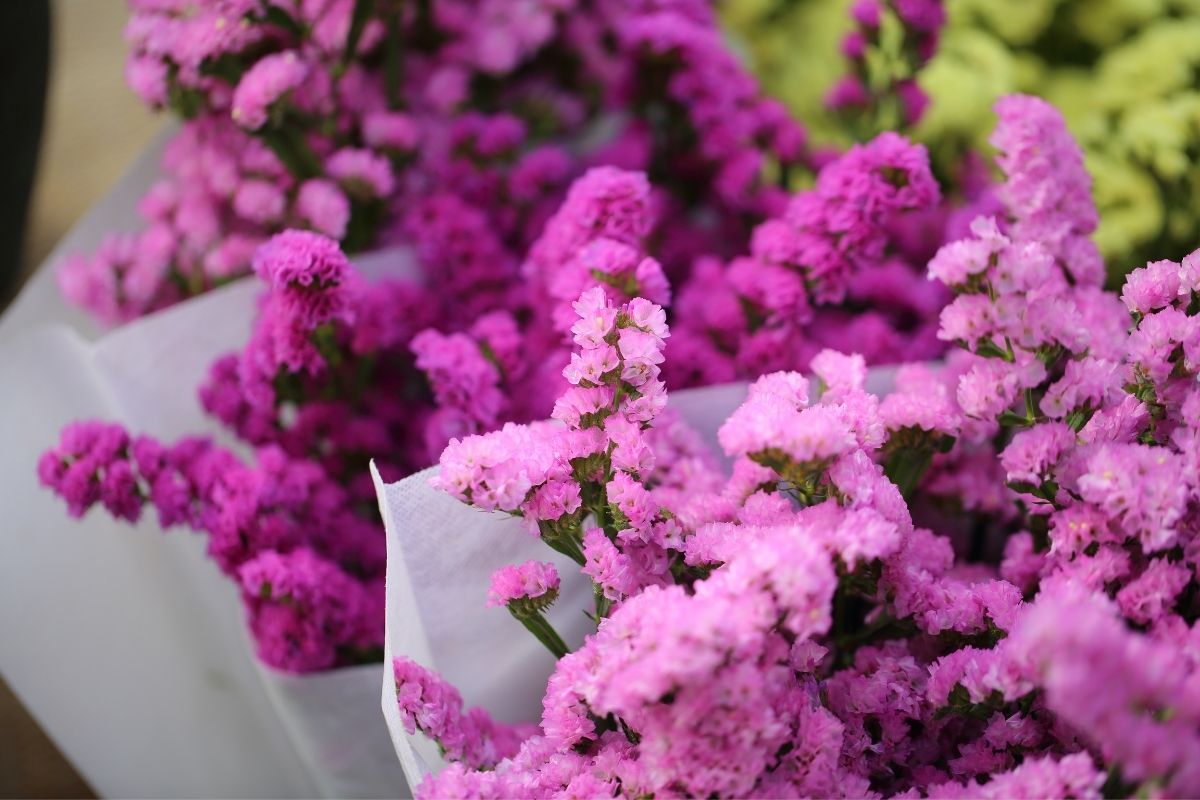
Limonium flowers appear during the early summer until the first frost arrives.
These flowers come in a variety of colors and color combinations that are truly stunning, but the main colors to note are hot pink, yellow, blue, white, and apricot.
This flower is fairly hardy and is drought tolerant but susceptible to being overwatered, so you will need to be mindful of how much water you’re giving it to avoid damaging the flowers.
8. Stargazer (Oriental Lily)
Stargazer lily, also known as Lilium ‘Stargazer’ is a hybrid lily of the oriental lily group. This lily is known for its fragrant and somewhat spicy aroma,
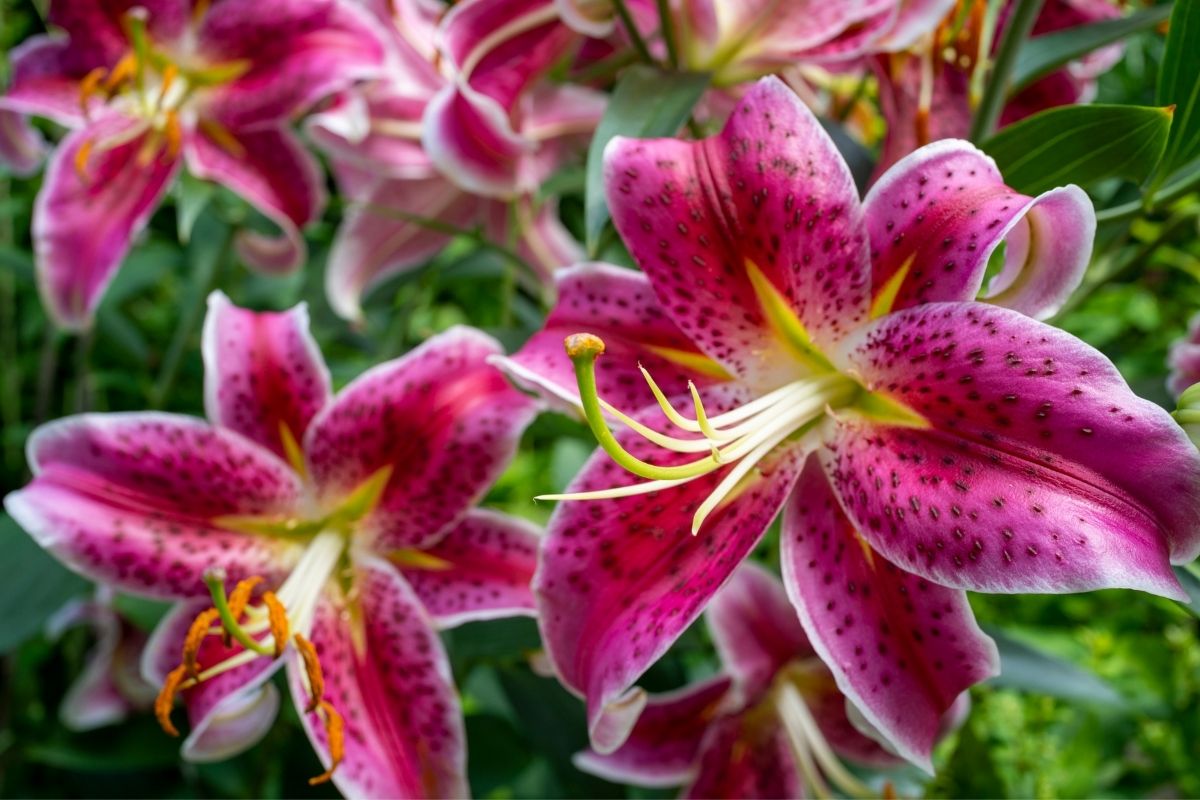
These lilies have a fast growth rate and should be planted in full sun, blooming during the summer season. Their blooms are pink to crimson, with white edges and dark spots.
That being said, there are also white and orange varieties available that will look just as beautiful in your garden.
9. Lisianthus
Eustoma, also known as lisianthus flowers, are perennials.
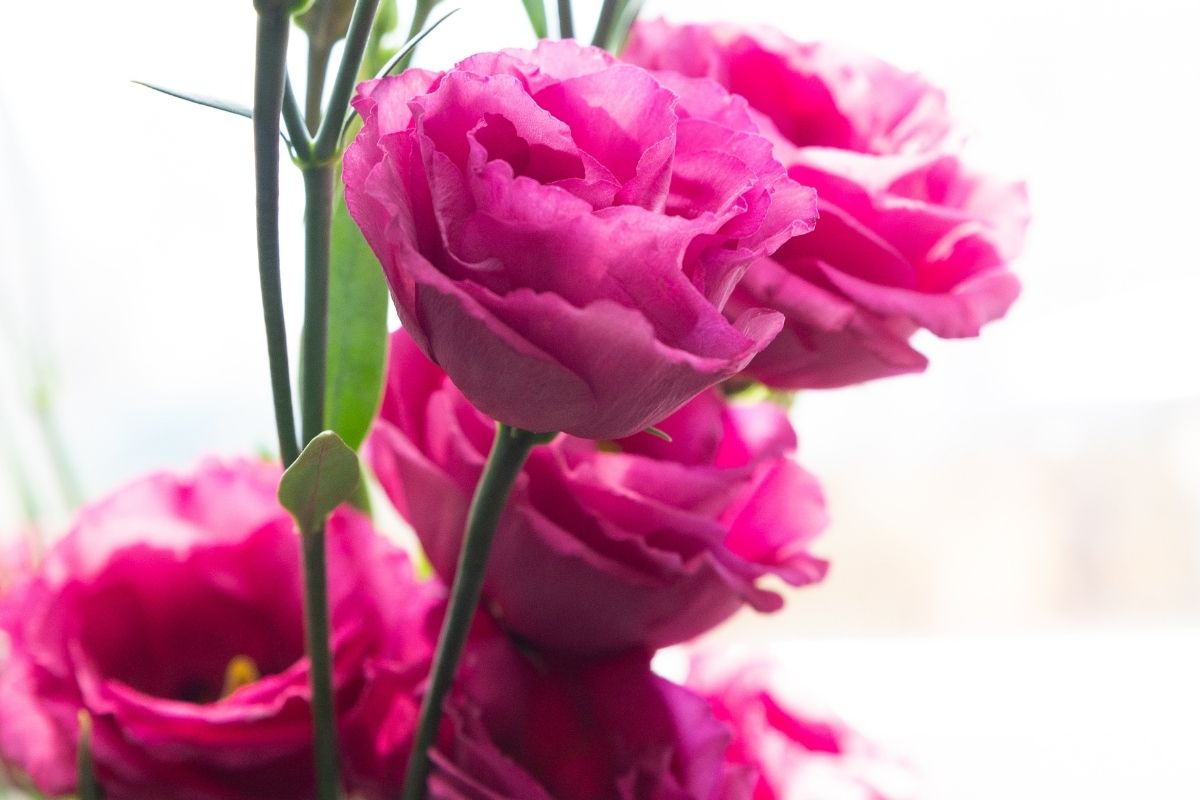
Lisianthus hot pink is a beautiful and vibrant pink flower, and these small and dainty flowers are hugely popular in bouquets and floral arrangements.
This variety is unique thanks to its ability to grow up to 3 blooms per stem, with each bloom having multi-layered petals, so it’s not hard to see why it’s such a popular choice.
10. Impatiens
Impatiens flowers are bright and cheerful annuals that are perfect for brightening up your flower beds.

These flowers get their name from the Latin, impatiens, meaning “impatient,” because their ripe seed pods will occasionally burst open with even the slightest touch.
Impatiens bloom during the spring and summer months and come in pastel and vibrant colors including pink, red, purple, white, coral, and yellow.
11. Nasturtium
Tropaeolum, commonly known as nasturtium, are both annuals and perennials, native to South and Central America.

Nasturtiums have a long blooming period – from summer until the first severe frosts of autumn.
The blooms come in a range of colors, from yellow to red, pink, white, and green to name a few of them.
12. Chenille
The Chenille plant is a flowering shrub that is part of the family Euphorbiaceae.
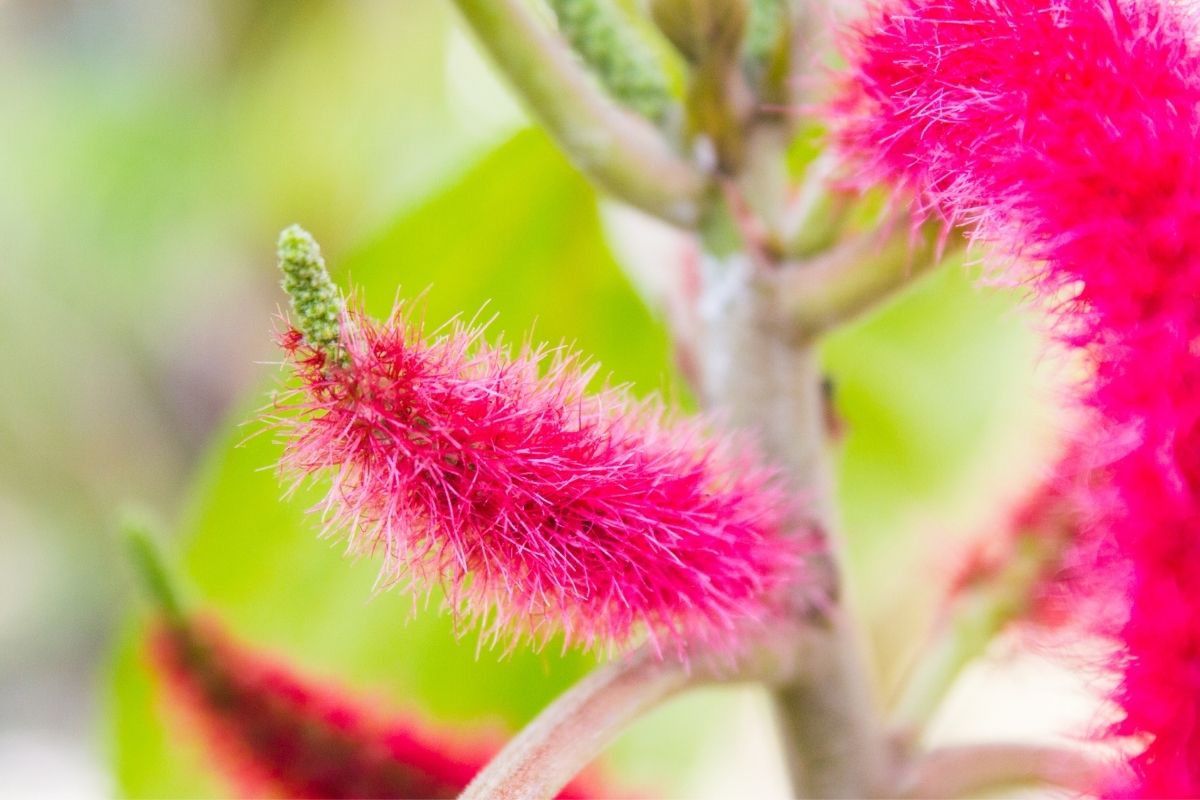
Chenille looks similar to a caterpillar because of its trailing, deep pink velvety flowers.
It can be kept either as an outdoor plant or as a houseplant.
That being said, if you are growing it inside you will need to make sure that you take care around pets, as the entire plant including the flowers are poisonous if ingested by animals.
13. Alyssum
Alyssum is a flowering plant native to Europe, Asia, and northern Africa.
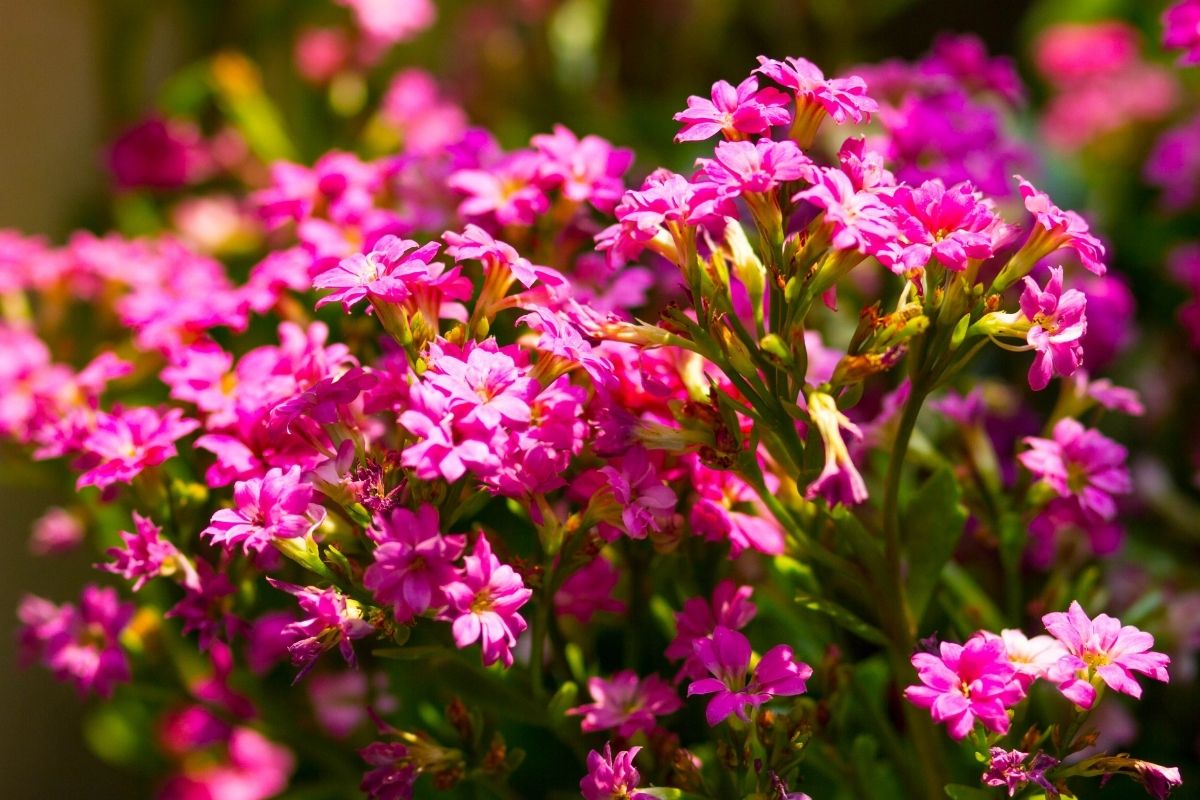
Typically speaking, the flowers are small and are grouped together in clusters.
The blooms come in all sorts of colors, including pink, purple, yellow, or white.
The flowers thrive in at least 6 hours of full sun a day, but they are able to tolerate partial shade, as well.
RELATED: 18 Low Growing Perennials Suitable for Your Gardenscapes
14. Firecracker Flower
The firecracker flower is a species of flowering plant from tropical America.
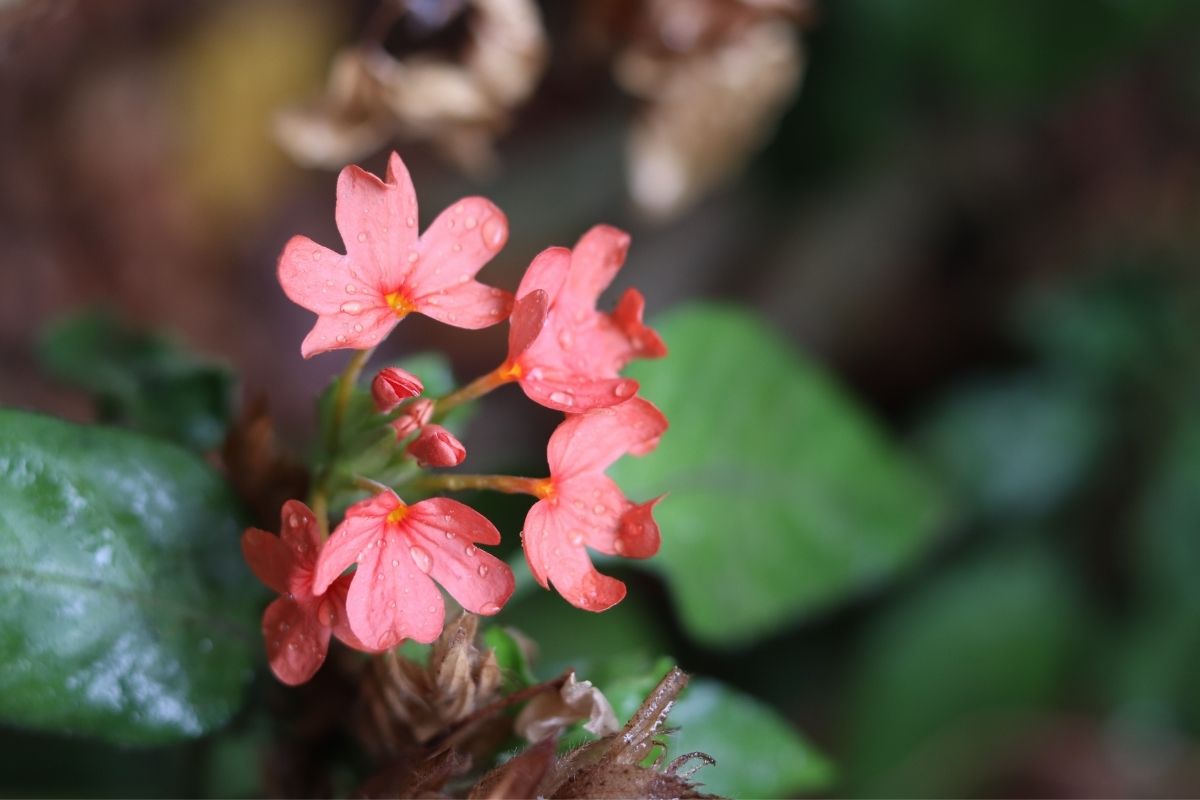
Its bloom time is fairly long, lasting from the end of spring throughout the summer and into the autumn in tropical and semi-tropical climates.
While orange flowers are the most common, there are also pink, salmon-red, and yellow flowers, making these exotic-looking flowers a wonderful addition to brighten up your yard.
15. Dianthus
Also known as clove pink and carnation, dianthus is a flowering plant native to Europe and Asia.
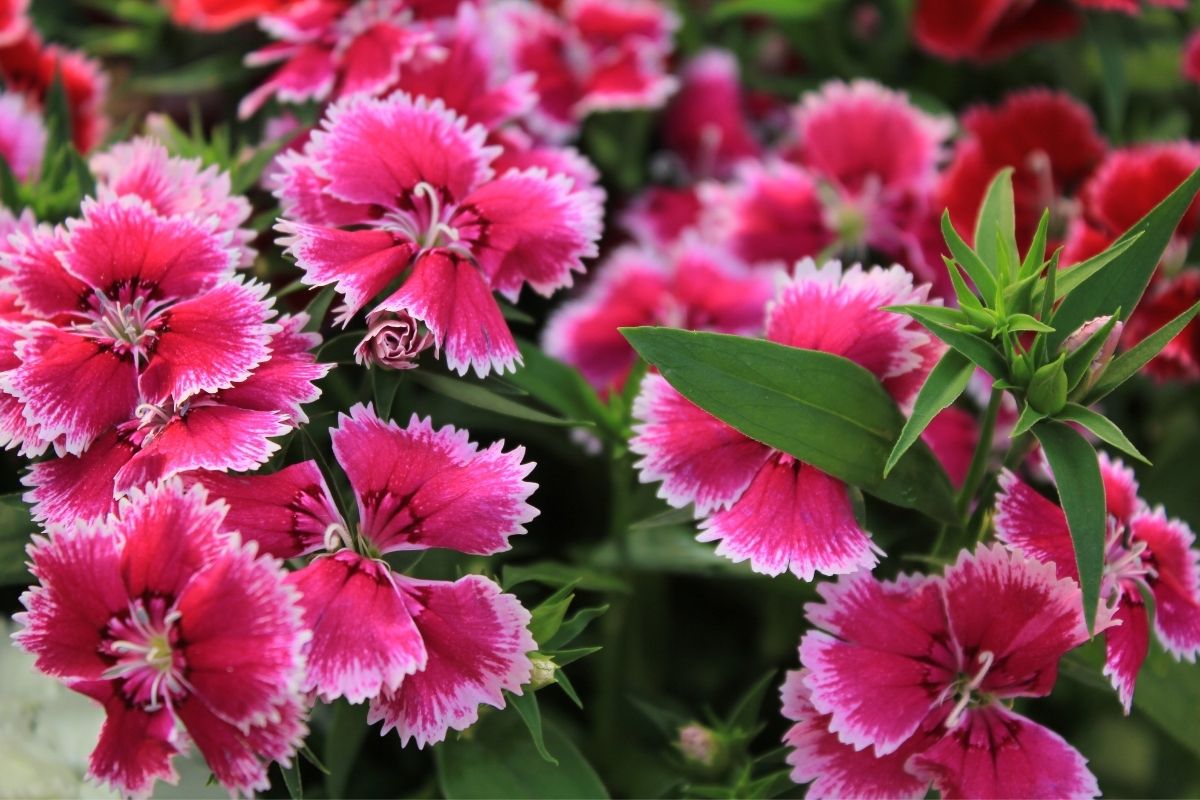
These flowers can come in many colors, from purple, red, white, pink, and yellow.
Deep pink dianthuses are gorgeous in appearance, with a distinctive cinnamon-like mild fragrance.
Their blooming season lasts from late spring through to the summer, making these flowers a lovely addition throughout the warmer months in your flower beds.
16. Bee Balm
Bee balm is a flowering plant that is native to North America that tastes like a combination of spearmint and peppermint with a hint of oregano.
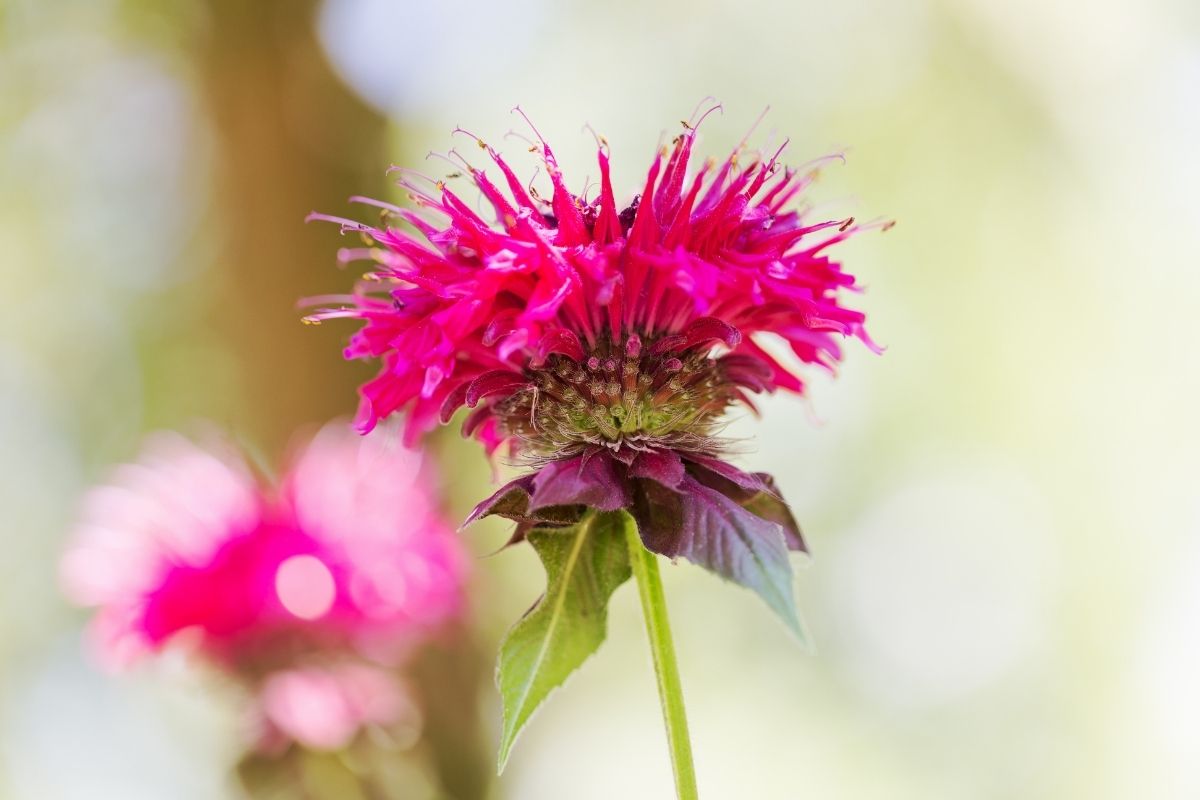
These single flowers typically thrive in woodland areas and grow in clusters.
They are known for attracting hummingbirds, pollinating insects, and helpful insects that help control pests in your garden.
17. Hollyhock
Hollyhocks are a flower that bloom mid-summer with numerous flowers on tall spikes and with petals that may be pink, white, purple, or yellow.
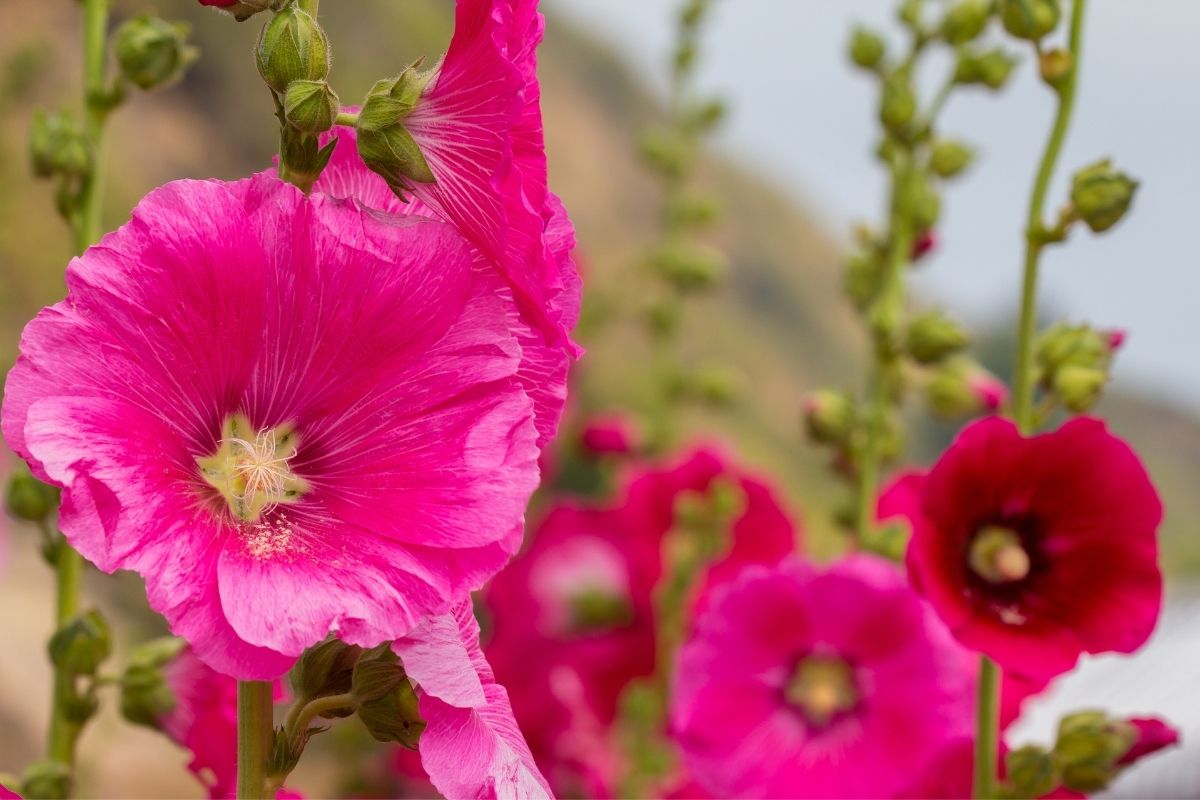
Apart from being trimmed, hollyhocks don’t require much maintenance, but they do need to be protected from insects and fungal diseases.
Hollyhocks need to be planted in a well-draining area with full sun to partial shade.
18. Tulip
Tulips are a perennial known for blooming in spring. The flowers are often brightly colored, and come in various shades.
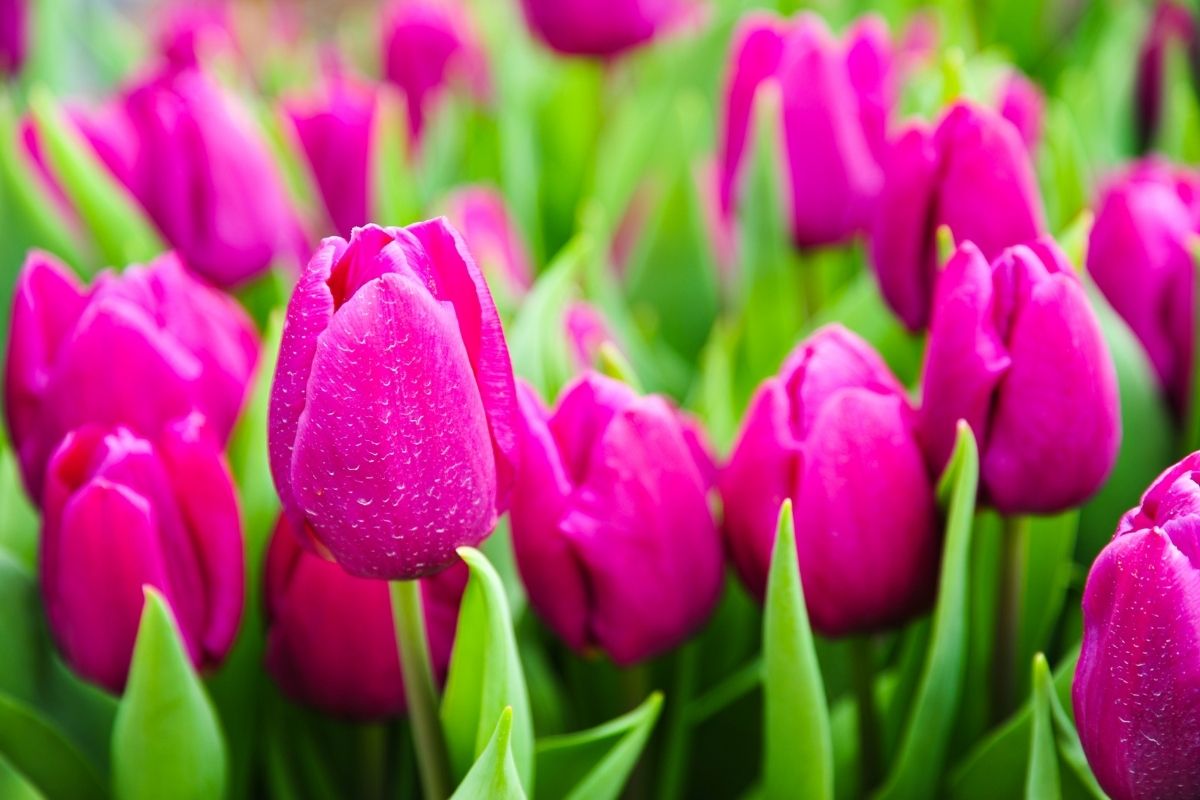
These colors include hot pink, red, yellow, purple, and white, and planting tulips is a lovely way to incorporate more bright colors into your flower beds.
Tulip flowers are single, double, ruffled, fringed, or lily-shaped, and vary depending on the variety.
19. Poppy Mallow
Poppy mallows are native to the prairies and grasslands of North America.
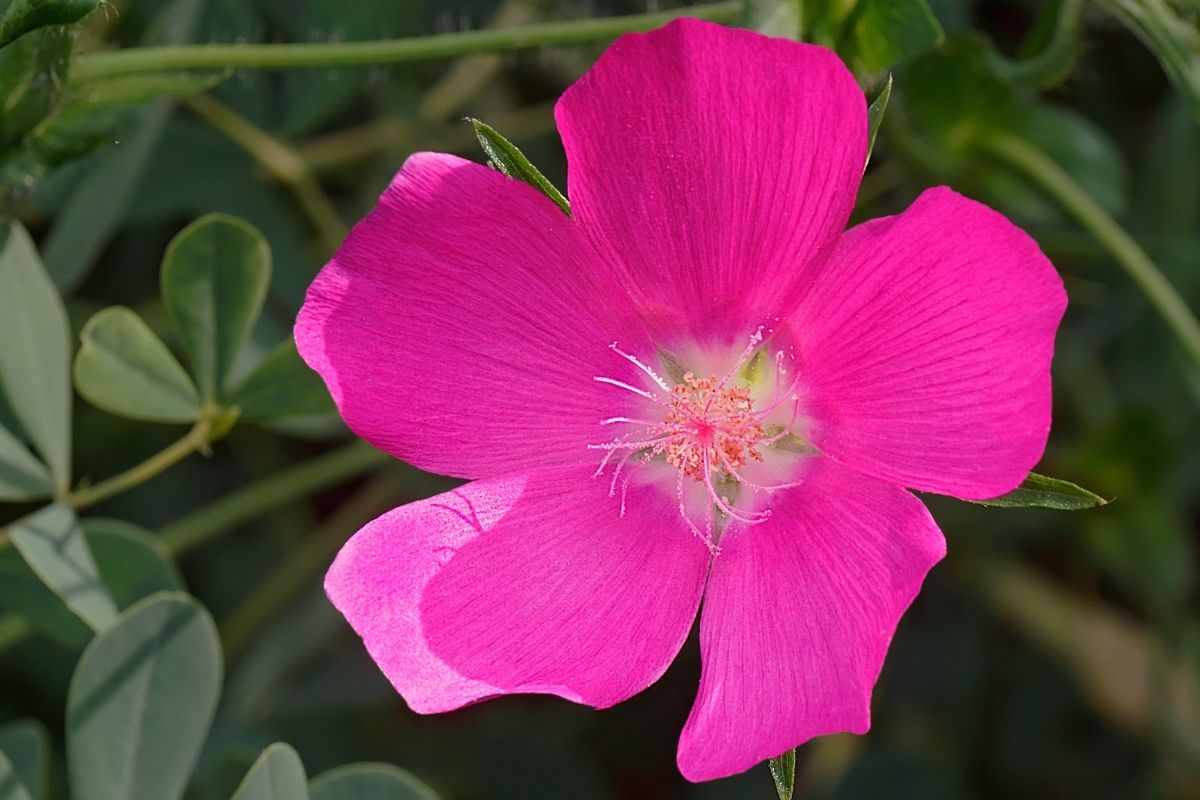
Early summer tends to be the peak bloom time for poppy mallows, but plants can continue blooming throughout summer and into the fall.
The colors of the flowers range from cerise, to red, to pink, with white centers.
20. Yarrow
Yarrow is a flowering plant native to temperate regions of the Northern hemisphere in Asia, Europe, and North America.

Typically speaking, yarrow tends to flower from May through to July. The colors of yarrow flowers range from white and soft pastels to bright shades of yellow, pink, red, orange, and gold.
In Summary
There you have a guide on hot pink flowers!
I hope this article has provided you with some inspiration on hot pink flowers that you can fill your garden with.
Good luck and happy gardening!







